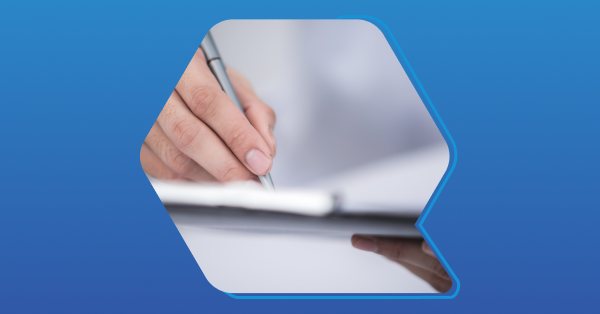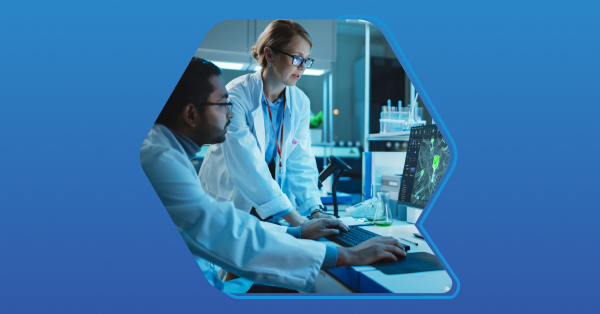The Best Lab Software for GxP

Meeting GxP and compliance standards is no small task for labs.
While the principles of GxP seem fairly simple (maintain order in your lab, meet safety standards, and properly store your documents, for starters), in practice, this can be an impossible task without software.
In this article, we’ll break down GxP and the best software solutions available to labs to meet GxP standards.
What is GxP?
GxP was established by the FDA to ensure safety and quality control standards in labs. GxP is a catch-all term that covers several industry best practices. You can think of GxP as “Good <fill in an industry> Practice” which lays out a series of standards and guidelines to follow.
Within GxP, there are several specific guidelines, such as:
- GMP – Good Manufacturing Practice, often referred to as cGMP (current Good Manufacturing Practices)
- GLP – Good Laboratory Practice
- GdocP – Good Documentation Practices
- GDP – Good Distribution Practice
- GCP – Good Clinical Practice
- GRP – Good Review Practice
- GSP – Good Storage Practice
What are the requirements for GxP?
GxP’s requirements can be broken down into the following categories:
- Standardization and quality assurance: This ensures that all activities, from research and development to manufacturing, are conducted under controlled conditions, reducing the risk of errors or contamination. It also ensures that the data and results generated are reliable and reproducible.
- Documentation and record-keeping: Every aspect of the laboratory processes, from the handling of materials to the details of experiments, must be recorded. This documentation ensures traceability, allowing for the identification and rectification of any issues that arise during the development and testing phases.
- Staff training and competency: This involves initial training and also continuous education to keep up with the latest industry standards and practices.
- Audit and inspection readiness: Regulatory bodies can conduct inspections without prior notice, and compliance with GXP standards ensures that laboratories can confidently undergo these assessments. Regular internal audits are also part of GXP compliance, helping identify and rectify any potential non-compliance issues proactively.
- Risk management: GXP encompasses risk management principles to identify, analyze, and mitigate risks associated with laboratory practices. This ensures that potential issues are addressed before they can impact the safety, quality, or efficacy of the products being developed or tested.
- Continuous improvement: GXP promotes a culture of continuous improvement. Feedback from audits, inspections, and day-to-day operations refines and enhances laboratory practices.
Managing these requirements manually can be a major source of stress for labs. Fortunately, the right software platform can automate/supplement your efforts to make things easier.
What Software Should Labs Use to Meet GxP?
There are three common software platforms used to help meet GxP standards.
They are:
- ELN (Electronic Lab Notebook)
- QMS (Quality Management System)
- LIMS (Lab Information Management System)
Electronic Lab Notebook (ELN)
Like a physical notebook, an ELN can help with the documentation, storage, retrieval, and sharing of experimental data and processes for a lab. The ability to document everything digitally is key to meeting GxP standards (especially lab data and SOPs).
An ELN can be used to:
- Capture and search detailed experimental procedures, observations, and results.
- Share real-time research data and notes with colleagues.
- Integrate data from laboratory instruments and databases.
- Follow documentation requirements with audit trails, electronic signatures, and digital entries.
An ELN can help digitize your lab’s records and processes. However, an ELN is primarily used to serve as an electronic notebook rather than a system that can be used to monitor and prevent compliance errors (which is needed to meet GxP standards). For that, a QMS or a LIMS are better options.
Quality Management System (QMS)
A QMS is a software platform that documents processes, monitors quality control, keeps tabs on instrument calibration, and tracks processes and modifications. A QMS is a great asset in meeting GxP regulatory requirements.
A QMS can help with:
- Managing the creation, review, approval, and distribution of documents, often called SOPs (Standard Operating Procedures).
- Overseeing changes to processes, equipment, or documentation.
- Tracking employee training and competencies.
- Addressing and preventing quality issues.
- Planning, conducting, and following up on internal and external audits.
- Identifying, assessing, and mitigating quality-related risks.
- Ensuring adherence to relevant regulations and standards.
A QMS is a common choice for labs that want to improve their quality assurance/control practices. A LIMS often combines these features with a broader set of features to support labs looking to improve their processes.
Laboratory Information Management System (LIMS)
A LIMS is a software-based solution designed to support modern laboratory operations. It's a comprehensive platform that helps manage, track, and streamline your lab, from sample management to data analysis and reporting.
A LIMS can be particularly valuable for:
- Ensuring data integrity and traceability
- Standardizing processes and reducing human error
- Facilitating regulatory compliance through built-in controls and audit trails
- Streamlining documentation and record-keeping
- Monitoring and calibrating instruments
- Managing inventory of samples and reagents
- Automating processes to reduce manual data entry errors
- Storing documents and SOPs
Of the three platforms available to labs, a LIMS is the most robust and comprehensive for meeting GxP requirements. Its ability to store information, digitize your records, proactively spot errors, and automate processes is unrivaled by any other software platform.

Which LIMS is Best for Labs Trying to Meet GxP?
Of all the LIMS available on the market, which one is the best for modern labs looking to scale and meet rigorous regulatory standards?
We’ve written extensively on the best LIMS available on the market, and of that list, there is a clear winner: QBench.
Why QBench is a leading option for labs of all sizes
QBench pairs its LIMS with a tightly integrated QMS. Pairing these tools together, rather than buying separate solutions, makes QBench the premier solution for labs needing to meet a range of GxP standards.
Unlike a customizable LIMS which requires complex code and expensive development work to make changes, QBench is a flexible and configurable platform that enables you to automate pretty much anything in your lab without a developer.
Many second-time LIMS buyers have felt the pain of legacy LIMS and how vendor-created, code-driven customizations lead to slow, costly updates. QBench is different. Our deep workflow configurability and flexible, easy-to-use tools allow for quick workflow adjustments, report modifications, and automation tweaks. Not only is QBench a robust and powerful LIMS with numerous integrations and a RESTful API, but it is also incredibly easy to use and configure to meet your lab’s needs.
Why QBench is the Best LIMS to Support GxP
QBench isn’t just easy to use, it’s one of the best LIMS on the market for helping your lab meet rigorous GxP standards. Here’s why:
- Integrated QMS: With QBench, you can get a QMS that is tightly integrated with your lab’s data, making quality assurance and control practices easy to implement. QBench’s built-in QMS allows you to track quality records, instrument calibration, and maintenance records, as well as share SOPs, store documents, and more.
- Configurable automations: QBench supports no-code configurable automations allowing you to automate processes, drastically reduce manual work and data entry errors, and get more done. Improve your lab’s workflows and processes with ease thanks to QBench’s configurable approach to automation.
- Security as a priority: The QBench team takes security and compliance seriously. We are SOC2 compliant, ISO-17025 compatible, and HIPAA compliant, and we implement security measures like audit trails, role-based access, and regular data backups to ensure your data is secure and recoverable.
- Stellar implementation: Need help implementing your LIMS and setting your lab up for success? The QBench team are experts at LIMS implementation and can give you a custom and timely implementation plan to ensure that your lab hits the ground running and is prepared for any standard.
- Market-leading partner: QBench sits at #1 on G2’s list of the Highest Rated LIMS in North America for a reason. QBench earns high marks on G2 for Ease of Use, Ease of Setup, Ease of Doing Business With, Quality of Support, and Ease of Admin.
Check out the Best Lab Software for GxP For Yourself: Request a Demo of QBench LIMS
Labs looking to meet GxP standards must use software to supplement (and automate) their processes, otherwise, they face a long and difficult upward climb.
There is no better software platform to support GxP than a robust LIMS, and of the best LIMS on the market, QBench provides a complete solution for labs. Not only does QBench provide a robust LIMS complete with automation, sample management, and compliance features - our integrated QMS gives you everything you need to automate, document, and optimize your lab.
Ready to streamline your lab or curious to learn more about how QBench LIMS can help you?








